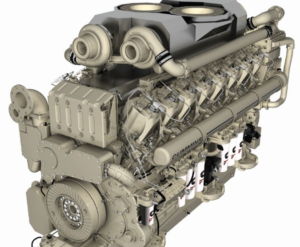History of diesel engine
In 1897, the world’s first diesel engine was built by Rudolf Diesel in Augsburg, Germany. At that time, steam engines were still one of the most used engines in large industries. Rudolf Diesel was born and raised in Paris, but later went to England due to the World War between Germany and France. After completing his university studies there, he returned to Paris in 1885 and began designing compression combustion engines.
The main idea of this design was to ignite the fuel and air mixture inside the engine without using a spark. This new idea became known as the internal compression combustion engine.
Rudolf Diesel believed that this system can convert 75% of heat energy into useful energy. But his efforts to achieve the desired return were in vain. The first produced engines had only 25% useful efficiency, but this efficiency was twice as good as other engines. The first generation of diesel engines were not durable and efficient, that’s why buyers returned the engines. So Rudolph Diesel made a change in his invention and finally his engine was used in 1904 in the French Navy on submarines.
After Rudolf Diesel, other companies followed his path and introduced new engines. After the First World War, the diesel engine was widely used. The first diesel trucks entered the market in the 1920s. Then in 1930, these engines were used in the first generation of trains.
After that, in 1939, diesel engines were used in a quarter of the ships and vessels active in the waters of the world. This engine is now widely used. Diesel generators, which are common suppliers of emergency power, are equipped with this engine. Many centers such as hospitals, organizations, offices, etc. use this device.

Authentic diesel brands
-
Caterpillar
-
VOLVO
-
Cummins
-
Perkins
-
Volvo Penta
-
LOVOL
-
Dorman
-
Deutz
-
MAN
-
SCANIA
Generator history
The generator as we know it today developed from the work of Michael Faraday and Joseph Henry in the 1830s. These two inventors discovered and recorded the phenomena of electromagnetic induction, which is now known as “Faraday’s Law“. This principle states that an electromotive force is created in an electrical conductor carrying a varying magnetic current. Based on this, Faraday also built the first electromagnetic generator – Faraday disk.
Word of Faraday’s law spread and in 1832 the French Hippolyte Pixie built the first dynamo generator. His model created pulses of electricity that are isolated without current. Coincidentally, he also created the first alternator. He didn’t know what to do with alternating current so he focused on trying to eliminate alternating current to get DC power.
While the dynamo was the first electric generator that could produce power for industry, for the next 30 years the battery was still the most powerful way to provide electricity, and even the battery had problems. A battery-powered electric train from Washington, D.C. to Baltimore has broken down, causing a major embarrassment to the new electric field. After wasting millions of dollars, old steam was still a better source of power. Engineers still had a long way to go to make electricity reliable and sustainable.
Antonio Pacinotti created a dynamo in 1860 that provided the first permanent DC power. A few years later, Werner von Siemens and Charles Wheatstone developed a stronger and more useful dynamo by using an automatic electromagnet instead of the weak permanent magnet.

Milestone
Everything was brighter and clearer in terms of electricity, and in 1871 a turning point was reached. Zénobe Gramme filled the magnetic field with an iron core, which created a better path for the magnetic flux. This increased the power of the alternator to the point where it could be used for many commercial applications. Gram’s invention caused an explosion of new designs in dynamo. But only a few of them were superior in efficiency. The most reliable and efficient dynamo design was assigned to the American Charles Brush in 1876. His invention was sold through the Telegraph Supply Company.
